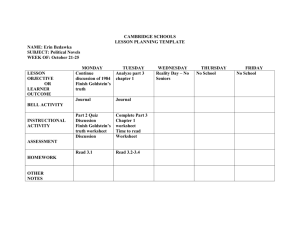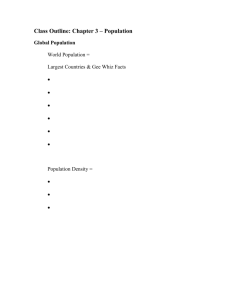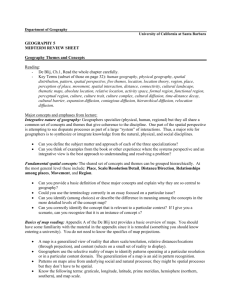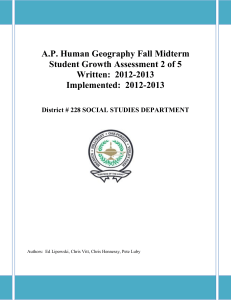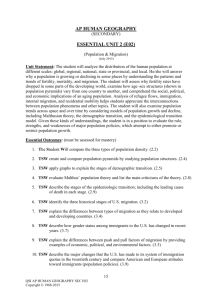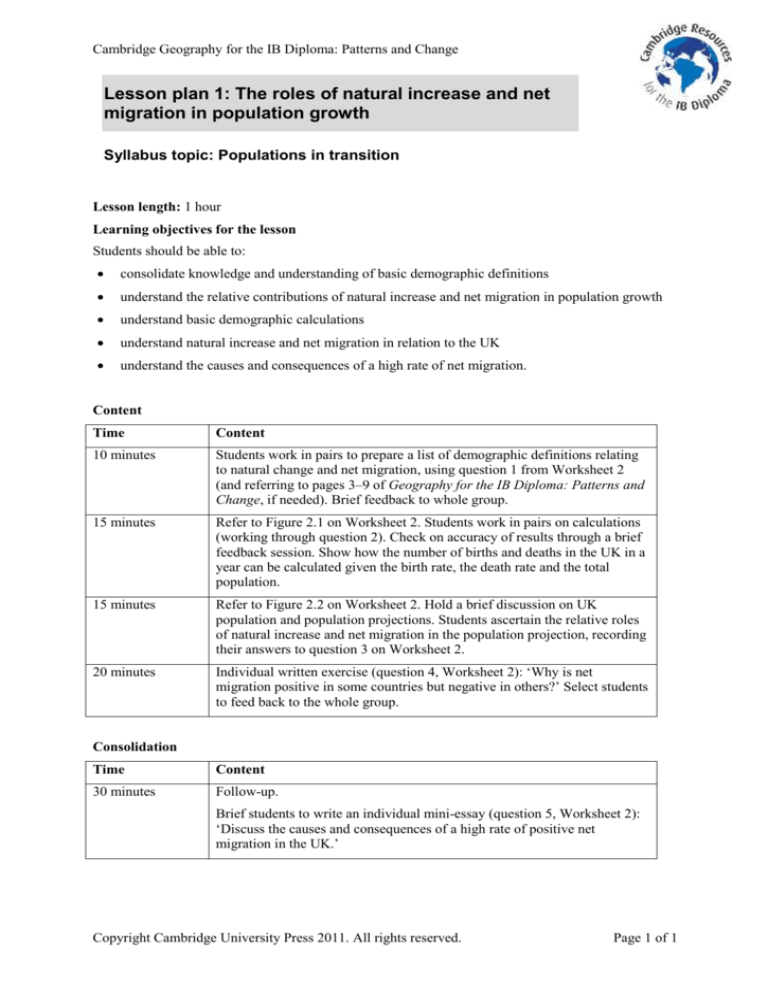
Cambridge Geography for the IB Diploma: Patterns and Change
Lesson plan 1: The roles of natural increase and net
migration in population growth
Syllabus topic: Populations in transition
Lesson length: 1 hour
Learning objectives for the lesson
Students should be able to:
consolidate knowledge and understanding of basic demographic definitions
understand the relative contributions of natural increase and net migration in population growth
understand basic demographic calculations
understand natural increase and net migration in relation to the UK
understand the causes and consequences of a high rate of net migration.
Content
Time
Content
10 minutes
Students work in pairs to prepare a list of demographic definitions relating
to natural change and net migration, using question 1 from Worksheet 2
(and referring to pages 3–9 of Geography for the IB Diploma: Patterns and
Change, if needed). Brief feedback to whole group.
15 minutes
Refer to Figure 2.1 on Worksheet 2. Students work in pairs on calculations
(working through question 2). Check on accuracy of results through a brief
feedback session. Show how the number of births and deaths in the UK in a
year can be calculated given the birth rate, the death rate and the total
population.
15 minutes
Refer to Figure 2.2 on Worksheet 2. Hold a brief discussion on UK
population and population projections. Students ascertain the relative roles
of natural increase and net migration in the population projection, recording
their answers to question 3 on Worksheet 2.
20 minutes
Individual written exercise (question 4, Worksheet 2): ‘Why is net
migration positive in some countries but negative in others?’ Select students
to feed back to the whole group.
Consolidation
Time
Content
30 minutes
Follow-up.
Brief students to write an individual mini-essay (question 5, Worksheet 2):
‘Discuss the causes and consequences of a high rate of positive net
migration in the UK.’
Copyright Cambridge University Press 2011. All rights reserved.
Page 1 of 1



